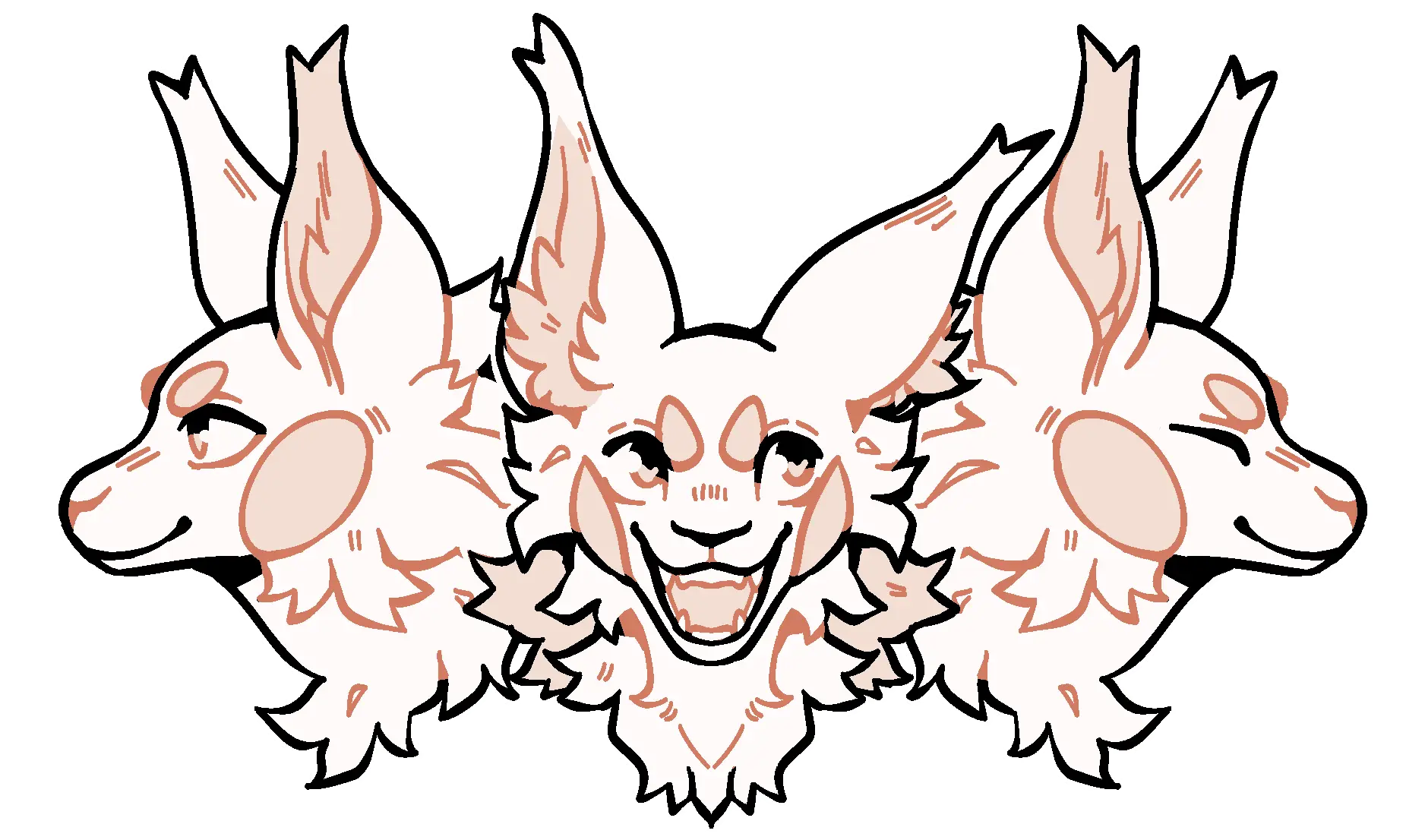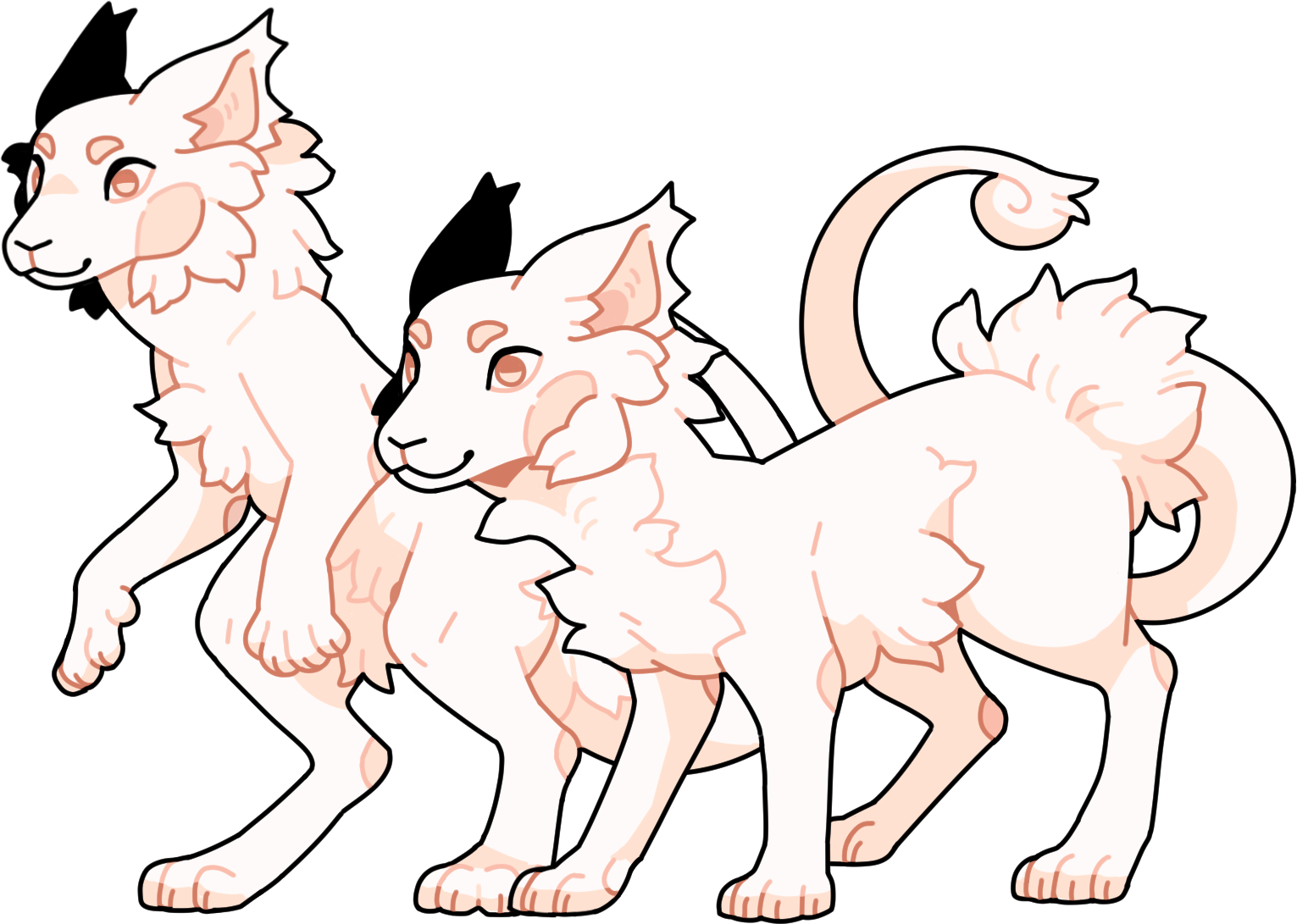Fenroo
Overview
Fenroos are a facultative bipedal species that inhabit the barren, desert-like lands of Veld. Intelligent and sociable, Fenroos often travel across Veld in small familial units known as "Mobilities", and have intricate relationships with not just their family and friends, but with the land of Veld itself. With a deep history and fascinating societal structures soon to be revealed, Fenroos act as a testament to the durability of life in such a desolate environment.
Fenroo, much like humans, are sentient beings that exhibit unique individual traits, identities and sense of self. They are highly sociable beings, often forming communities ranging from quaint villages to expansive cities.
A group of fenroo consisting of more than 10 members is called a bound, whereas a smaller group is referred to as a leap. Family units are called "mobilities".
- Fenroo settlements are led by elders as a gerontocracy
- Due to the climate of Veld, most larger fenroo communities gather along the coasts and rivers
NOTE: There is no one-size-fits-all for fenroo, your character can be from anywhere, have any type of profession, and have any life on Veld.
Society & Culture
Communication
 Fenroo bowing
Fenroo bowing Fenroo rubbing cheeks
Fenroo rubbing cheeksWhile fenroo communicate primarily by spoken language, they do have some body languages and behaviours that are specific to them.
Fenroo are highly expressive and can convey a wide range of emotions and messages through their body language and vocalizations, ranging from chirps and whistles to growls and snarls. They also use their ears and tails to communicate, with different movements and positions conveying different meanings.
Fenroo Anatomy

Fenroo are a bipedal species with digitigrade legs, long tails, and long ears. They have a unique feature called venulae, which are specialised glands located across their body.
Fenroo have a wide range of fur colors and patterns, with the most common being shades of brown, yellow, and white. Their eyes are large and expressive, with a wide range of colors. They have sharp claws on their hands and feet, which they use for climbing and hunting. Their hands are also dexterous and capable of manipulating tools and objects.
Fenroo are omnivorous, with a preference for fruit, vegetables, and insects. They have a keen sense of smell and hearing, and are known for their excellent night vision. They are highly adaptable and can thrive in a variety of environments, from dense forests to open plains.
Venulae
Venulae are specialized glands located across the fenroo's body. They are sensitive and are used to communicate with other fenroo, as well as other species.
Venulae are unique to fenroo and are one of their most distinctive features. They are an important part of fenroo culture and are used in a variety of ways, from communication to art and decoration. Venulae are also an important part of fenroo biology, as they help regulate body temperature and moisture levels.
Venulae are involved heavily in expression of emotion, and traditions such as rubbing cheek venulae are a common way to show affection and trust.
Restrictions
- Venulae must fall within the allowed values range, if not of legendary rarity.
- Venulae cannot be used to create complex patterns or designs on the fenroo's body.
- Venulae cannot be used to create light or emit light from the fenroo's body.
